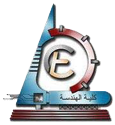Research
This paper presents a real time simulation for virtual end milling process. Alyuda NeuroIntelligence was
used to design and implement an artificial neural network. Artificial neural networks (ANN’s) is an
approach to evolve an efficient model for estimation of surface roughness, based on a set of input
cutting conditions. Neural network algorithms are developed for use as a direct modeling method, to
predict surface roughness for end milling operations. Prediction of surface roughness in end milling is
often needed in order to establish automation or optimization of the machining processes. Supervised
neural networks are used to successfully estimate the cutting forces developed during end milling
processes. The training of the networks is preformed with experimental machining data. The neural
network is used to predict surface roughness of the virtual milling machine to analyze and preprocess
pre measured test data. The simulation for the geometrical modeling of end milling process and
analytical modeling of machining parameters was developed based on real data from experiments
carried out using Prolight2000 (CNC) milling machine. This application can simulate the virtual end
milling process and surface roughness Ra (µm) prediction graphs against cutting conditions
simultaneously. The user can also analyze parameters that influenced the machining process such as
cutting speed, feed rate of worktable.
Key words: Surface roughness, virtual reality, simulation, surface roughness, virtual end milling process, neural

